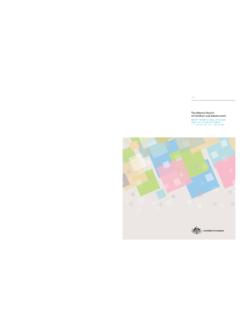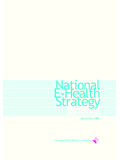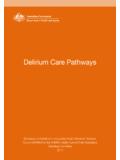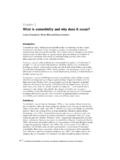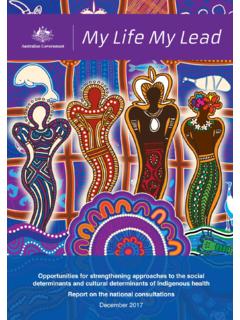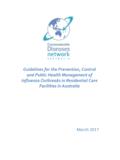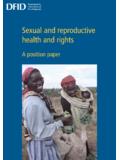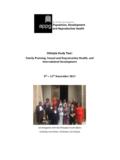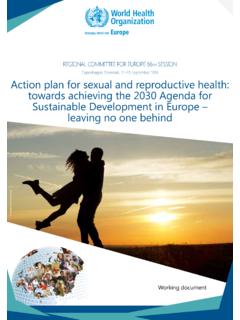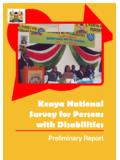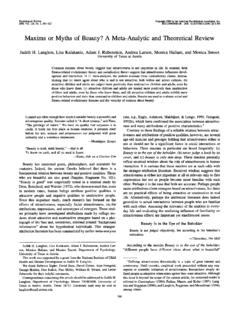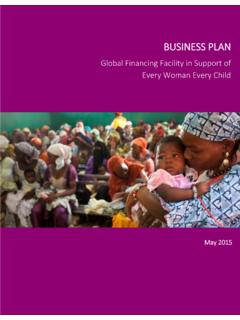Transcription of Independent Review - Department of Health
1 Assisted reproductive Technologies Review Committee Report of the Independent Review of Assisted reproductive Technologies Contents Tables and Terms of Committee Executive 13 Conduct of the Scientific Assisted reproductive Technologies (ART)..22 Measurement of ART Clinical Causes of Risk Male factor Female factor Ovulatory reproductive tract Defects in sperm-mucus Relative frequency of different underlying Infertility ART In vitro fertilisation (IVF)..28 Controlled ovarian hyperstimulation (COH)..28 Sperm Embryo Cryopreservation and frozen embryo Intracytoplasmic sperm injection (ICSI)..31 Gamete intrafallopian transfer (GIFT)..31 Artificial insemination Intrauterine insemination (IUI)..31 Preimplantation genetic diagnosis (PGD)..32 Donor Donor Gestational Safety of Ovarian hyperstimulation syndrome (OHSS).
2 34 Multiple Congenital 36 Other antenatal ART incident Impact on quality of Societal Context and Consumer Assisted reproductive technologies 1 Decreasing birth rates and ageing Access to ART Funding of Current reimbursement Medicare and ART and the Pharmaceutical Benefits Scheme (PBS)..46 Costs associated with ART under Government expenditure for ART services under International funding Regulation of Accreditation of ART and the Therapeutic Goods Administration (TGA)..53 Complementary Medicine and Outcomes of Data Methodological Predictors of ART 55 Discontinuation Spontaneous Comparison of Australian and international ART Evaluation of Clinical effectiveness of IVF by maternal IVF by cycle IVF by duration of IUI by maternal IUI by cycle IUI vs ICSI vs IVF effectiveness by male factor ICSI vs IVF safety congenital malformation Frozen embryo 84 Blastocyst Cost-effectiveness of Summary of Assisted reproductive technologies 2 Tables and Figures Figures Figure 1.
3 Treatment cycles started, pregnancies and live births, Australia and New Zealand, 1993 2002 19 Figure 2. Number of transfer cycles by ART treatment type, Australia and New Zealand, 1993 2002__20 Figure 3. Distribution of treatment cycles by location for Australia and New Zealand_____42 Figure 4. Live birth per cycle started by woman s age for fresh, non-donor ART treatment, 2002_____60 Figure 5. Success rates for ART by maternal age, US CDC data 2002_____65 Figure 6. Cumulative live births and costs by number of IVF treatment programs per couples commencing IVF treatment Government perspective (MBS plus Medicare Safety Net Costs)_____91 Figure 7. Cumulative live births and costs by number of IVF treatment programs per couples commencing IVF treatment Societal perspective (Total Costs)_____91 Tables Table 1. Medicare Benefits Schedule Items for ART_____44 Table 2. Frequency of treatment cycles undertaken (including current cycle) for fresh non-donor ART treatment cycles, Australia 2002_____45 Table 3.
4 Frequency of treatment cycles undertaken (including current cycle) for fresh non-donor ART treatment cycles by maternal age group, Australia 2002_____45 Table 4. Australian Government expenditure on assisted reproductive services 2000-2005_____47 Table 5. ART services provided under Medicare by patient and service number 2000-2005_____47 Table 6. Increases in numbers of patients and number of services of each year compared with preceding year_____48 Table 7. Success rates of fresh, non-donor ART by maternal age, ANZARD data_____61 Table 8. Live birth rates by maternal age for fresh, non-donor IVF cycle started, 1995-1999_____62 Table 9. Success rates of fresh, non-donor IVF by maternal age and cycle number, ANZARD data____68 Assisted reproductive technologies 3 Assisted reproductive technologies 4 Terms of Reference Assisted reproductive Technologies Review Committee The Review will consider, and advise the Minister, on the clinical and cost-effectiveness of assisted reproductive technologies (ART) for the purposes of public funding under the Medicare Benefits Schedule.
5 The Review will examine the evidence to determine the costs and outcomes of ART in Australia and in other comparable countries. The Review will make recommendations to the Minister on: The clinical appropriateness of ART interventions for the management of infertility, including societal impacts; The clinical effectiveness of the various methods of ART, having regard to the underlying causes of infertility; Suitable measures of ART outcomes for reporting purposes; The extent to which ART should be publicly funded, having regard to effectiveness, access and equity; Any other matters the Review considers relevant for the Minister s consideration. Assisted reproductive technologies 5 Committee Membership The Assisted reproductive Technologies Review Committee: Professor Ian Fraser ( Independent Chair) Professor in reproductive Medicine Department of Obstetrics and Gynaecology The University of Sydney Associate Professor Peter Illingworth Acting Director Women s & Children s Health Westmead Hospital, Sydney Dr Therese McGee Head Department of Obstetrics and Gynaecology Westmead Hospital, Sydney Dr Andrew Pesce AMA Representative Obstetrics and Gynaecology Services Westmead Private Hospital, Sydney Ms Bettina Arndt Feature writer Australian Consolidated Press Regular speaker ABC radio (Sydney, Melbourne and Canberra)
6 Professor John Horvath Chief Medical Officer Department of Health and Ageing, Canberra Assisted reproductive technologies 6 Abbreviations ABS Australian Bureau of Statistics AHEC Australian Health Ethics Committee AHTAC Australian Health Technology Advisory Committee AIHW Australian Institute of Health and Welfare ANZARD Australian and New Zealand Assisted Reproduction Database ART Assisted reproductive Technology ASRM American Society for reproductive Medicine ASSET Australian Study of Single Embryo Transfer BESST Birth Emphasising a Successful Singleton at Term BMI Body Mass Index BWS Beckwith-Wiedemann Syndrome CDC Centers for Disease Control and Prevention CFO Child and Family Outcomes CI Confidence Interval CMR
7 Congenital Malformation Rate DET Double Embryo Transfer DI Donor Insemination eSET Elective Single Embryo Transfer ESHRE European Society of Human Reproduction and Embryology ET Embryo Transfer FSH Follicle Stimulating Hormone GIFT Gamete Intrafallopian Transfer GnRH Gonadotrophin-Releasing Hormone HCG Human Chorionic Gonadotrophin HFEA Human Fertilisation and Embryology Authority HMG Human Menopausal Gonadotrophin HOMBR Higher Order Multiple Birth Rate HOPR Higher Order Pregnancy Rate HTA Health Technology Assessment ICSI Intracytoplasmic Sperm Injection IUI Intrauterine Insemination IVF In Vitro Fertilisation LBR Live Birth Rate LH Luteinising Hormone MBS Medicare Benefits Schedule MSAC Medical Service Advisory Committee NHMRC National Health and Medical Research Council NICE National Institute of Clinical Effectiveness OHSS Ovarian Hyperstimulation Syndrome OPU Oocyte Pickups OR Odds Ratio PBS Pharmaceutical Benefits Scheme PGD Preimplantation Genetic Diagnosis PICO population, intervention, comparator.
8 Outcomes RCT Randomised Controlled Trial rFSH Recombinant Human Follicle Stimulating Hormone RR Relative Risk Assisted reproductive technologies 7 RTAC (Fertility Society of Australia) reproductive Technology Accreditation Committee SART Society for Assisted reproductive Technology SDR Singleton Delivery Rate SET Single Embryo Transfer TBR Twin Birth Rate TMC Total Motile Sperm Count TrBR Triplet Birth Rate WHO World Health Organisation ZIFT Zygote Intrafallopian Transfer Assisted reproductive technologies 8 Glossary1 Aneuploidy: Variation in chromosome number involving one or a small number of chromosomes; commonly involves the gain or loss of a single chromosome.
9 Anovulation: suspension or cessation of ovulation. Artificial insemination: placing sperm into the female reproductive tract other than through sexual intercourse. Assisted hatching: an in vitro procedure in which the zona pellucida of an embryo (usually at 8-cell stage or a blastocyst) is perforated by chemical, mechanical or laser-assisted methods to assist separation of the blastocyst from the zona pellucida. Assisted reproductive technology (ART): the application of laboratory or clinical techniques to gametes and/or embryos for the purposes of reproduction (AHEC Report, 2004). Assisted reproductive services: clinical treatments that involved assisted reproductive technology. ART cycle: a period of up to 30 days during which either controlled ovarian hyperstimulation has been performed with the intention of applying assisted reproductive technology, or assisted reproductive technology has been applied to patient care.
10 Biochemical pregnancy (pre-clinical pregnancy): evidence of conception based only on biochemical data in the serum or urine where no clinical pregnancy results. Blastocyst: an embryo with a fluid-filled blastocele cavity (usually developing by five or six days after fertilisation). Cancelled cycle: an ART cycle in which controlled ovarian hyperstimulation has been performed with the intention of applying assisted reproductive technology but assisted reproductive technology has not been used. Clinical pregnancy: a pregnancy that fulfils one of the following criteria: known to be ongoing at 20 weeks; evidence by ultrasound of an intrauterine sac (with or without a fetal heart); examination of products of conception reveal chorionic villi; or a definite ectopic pregnancy that has been diagnosed laparoscopically or by ultrasound. Clinical pregnancy rate: number of clinical pregnancies expressed per 100 treatment events.
